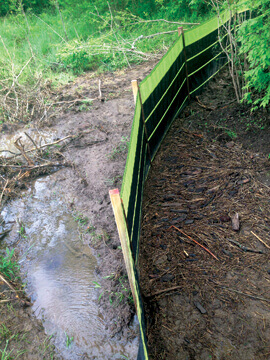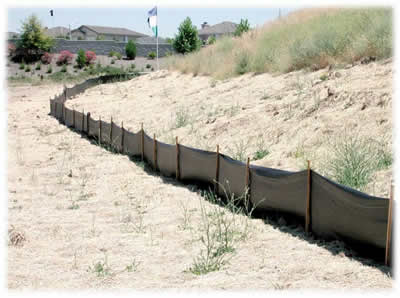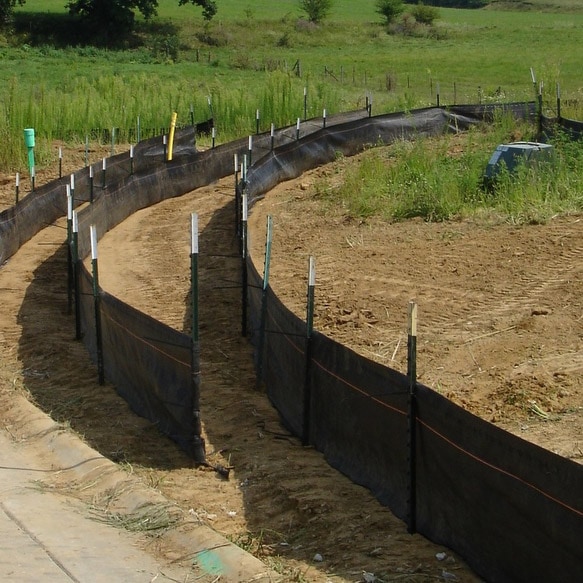A silt fence sometimes misleadingly called a filter fence is a temporary sediment control device used on construction sites to protect water quality in nearby streams rivers lakes and seas from sediment loose soil in stormwater runoff silt fences are widely used on construction sites in north america and elsewhere due to their low cost and simple design.
Proper silt fence installation.
Soil type slope slope length rainfall and site configuration are all important elements in determining the adequate silt fence protection for a site and to what extent it fits the 100 ft per 10 000 sq ft rule of thumb.
Properly installed silt fence helps keep mud and dirt out of waterways.
Installed silt fence 26 high 42 wood stakes 6 on center wire backed 26 42w 6oc wire view standard drawings.
Sides erosion control silt fence.
2place the base of the silt fencing in the trench.
Set the silt fence perpendicular to the slope of the land curving the fence inward towards slope.
3backfill the trench being sure to compact the soil over the base of the silt fence.
Dwg or pdf should be specified where it is subject to abuse or at times where you can t afford to have a failure.
Our silt fence installer slices and plows through dirt to securely install the fence in no time.
Proper installation and maintenance of silt fence is a critical factor in its success.
Thumb for the proper amount of silt fence is 100 ft of silt fence per 10 000 square foot sq ft of disturbed area.
It originated from a contractor s request form for a silt fence plow and we made it a reality.
The combination of these two aspects allows the silt fencing to retain and slow.
Super silt fence should not be used in areas where rock or rocky soils prevent the full and uniform anchoring of the fence or proper installation of the fence posts.
The installer accomplishes the contractor s goal by being precisely engineered powerfully built and dependable.
Our silt fencing withstands heavy rain and storms.
Tabs are typically round flat pieces of thin metal that serve to increase the hold of roofing tacks effectively extending the size of the tack head.
Install beginning at a corner and working in a consistent direction along the fence line.
Silt sediment fence installation when installing a silt fence first choose the appropriate place to set up a silt fence by considering site terrain and slope water flow and projected soil disturbance during construction.
Attach silt fencing to the posts or stakes with roofing tacks and tabs.
Wattles are erosion and sediment control barriers consisting of straw or other organic materials wrapped in biodegradable tubular plastic or similar encasing material.
Any filter cloth is placed on the uphill side of the posts with the lower edge of the filter cloth of a silt fence buried to minimum depth of 6 inches and compacted into place.
Be sure that the posts are positioned on the down slope side.




















